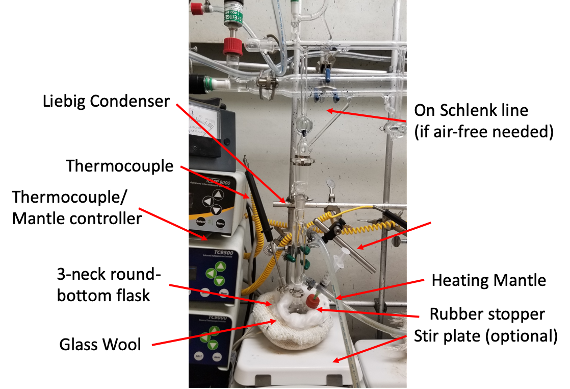


Place the substrate or 2D materials in the round-bottom flask, evacuate and flush with N2. In a glovebox, prepare two stock solutions. The first (solution 1) should be 3mL of acetone in an air-free septa vial. The second (solution 2) should be 0.015 g InCl dissolved in 3mL of air free acetone. Inject solution 1 of just acetone into the round bottom flask and heat to just below reflux (50°C). Dropwise, inject solution 2 over the course of an hour. Let the solution heat for an additional 20-30 mins. Remove the substrate from solution and rinse with hot ethanol and hot acetone (∼45°C).
Notes: This one you can actually be lazy on because InCl disproportionates so slowly in acetone. You can actually inject the entire solution in and reflux for an hour. I advise the slower route for better results.
| Fe(CO)5 | acetone | time | ~ intercalated in Bi2Se3 |
|---|---|---|---|
| 0.015 g | Total = 6 mLs | 1.5 hours | 7-17 atm % ± 10% |
M. Wang, D. Williams, G. Lahti, S. Teshima, D. Dominguez-Aguilar, K. J. Koski, Chemical intercalation of heavy metal, semimetal, and semiconductor atoms into 2D layered chalcogenides. 2D Materials, 5, 045005 (2018)